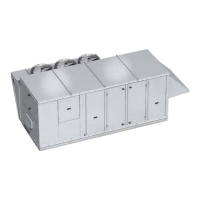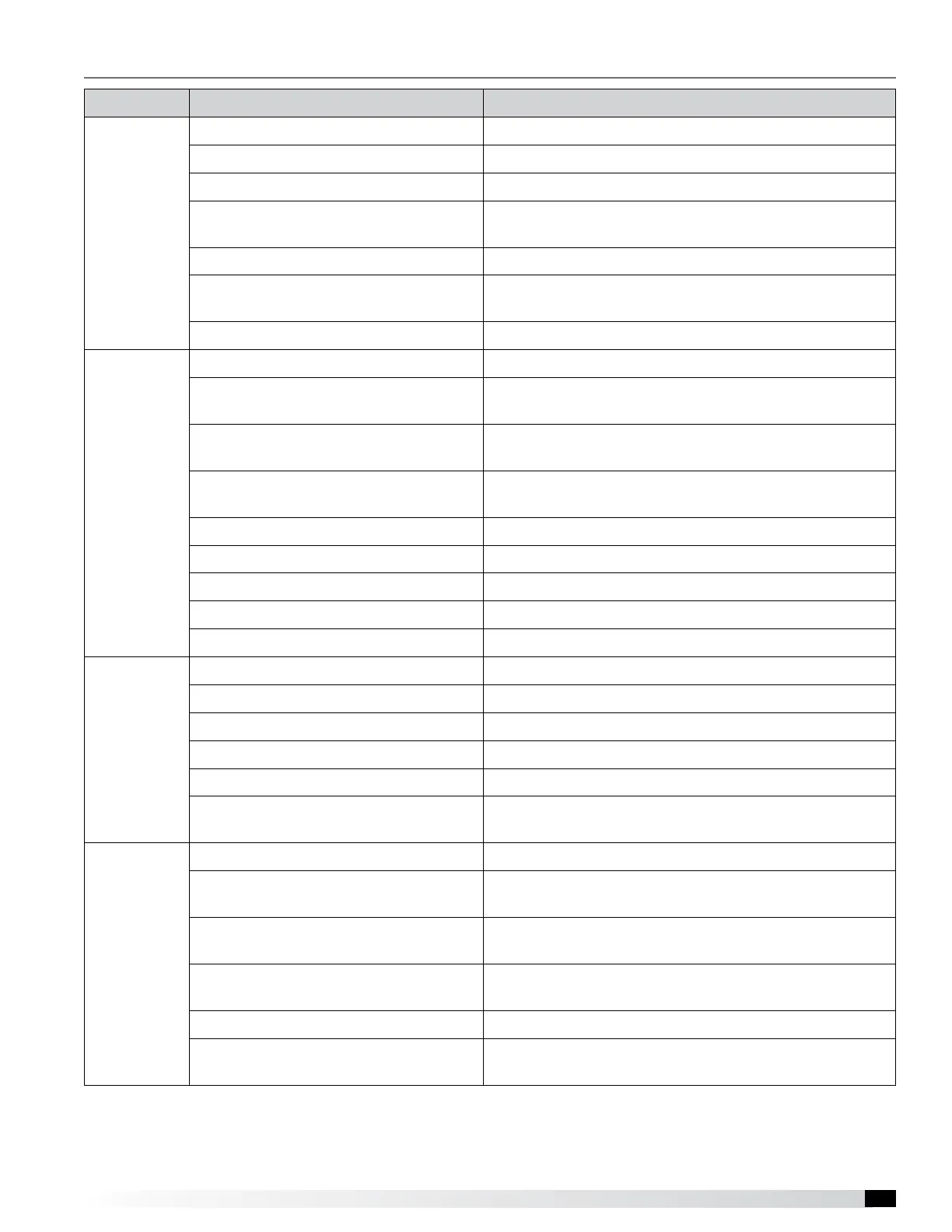Dedicated Outdoor Air Unit 35
Symptom Possible Cause Corrective Action
Compressor
starts but
cuts out
on high
pressure
switch
High pressure
switch cuts
out at 610
PSIG
Refrigerant overcharge. Check pressures, charge by subcooling.
Condenser fan motor defective. Check fan motor.
Condenser coil inlet obstructed or dirty. Check coil and clearances. Clean coil if necessary.
Air or non-condensables in system.
Check high side equalized pressures, check expansion
valves.
Defective high pressure switch. Replace.
Restriction in discharge or liquid line.
Check refrigerant line pressures, check expansion valves,
replace any defective component.
Condensing fan relay not pulling in. Replace.
Compressor
cuts out
on thermal
overload
Low voltage. Check voltage.
Sustained high discharge pressure.
Check running amperage and conditions described under
“low suction pressure” symptoms.
High suction and discharge pressures.
Check thermal expansion valve setting, check for air in
system. Check air conditions and cfm.
Defective compressor overload.
If compressor is hot, allow compressor to cool for two
hours. Recheck for open circuit.
Improper refrigerant charge. Check subcooling.
Improperly wired. Review wiring schematics.
Loose wiring. Check all connections.
Defective start relay. Replace relay.
Motor windings damaged. Verify amp draw.
Compressor
hums, but
will not start
Improperly wired. Review wiring schematics.
Low line voltage. Check voltage.
Loose wiring. Check all connections.
Defective start relay. Replace relay.
Motor winding damaged. Verify amp draws. Replace compressor if necessary.
Internal compressor mechanical
damage.
Replace.
Compressor
noisy or
vibrating
Refrigerant overcharge. Check pressures and subcooling.
Liquid floodback.
Check thermal expansion valve setting. Check for
refrigerant overcharge.
Tubing rattle.
Dampen tubing vibration by taping or clamping. Carefully
bend tubing away from contact where possible.
Scroll compressor rotating in reverse.
(3-phase)
Check high and low side pressures during operation to
confirm. Rewire for opposite rotation.
Damaged compressor. Replace the compressor.
Improper mounting on unit base.
Check that compressor is properly isolated and mounting
bolts are tight.
Troubleshooting – Refrigeration Circuit
Always have a completed Pre-Start-Up Checklist and Start-Up Checklist prior to requesting parts or service information.

